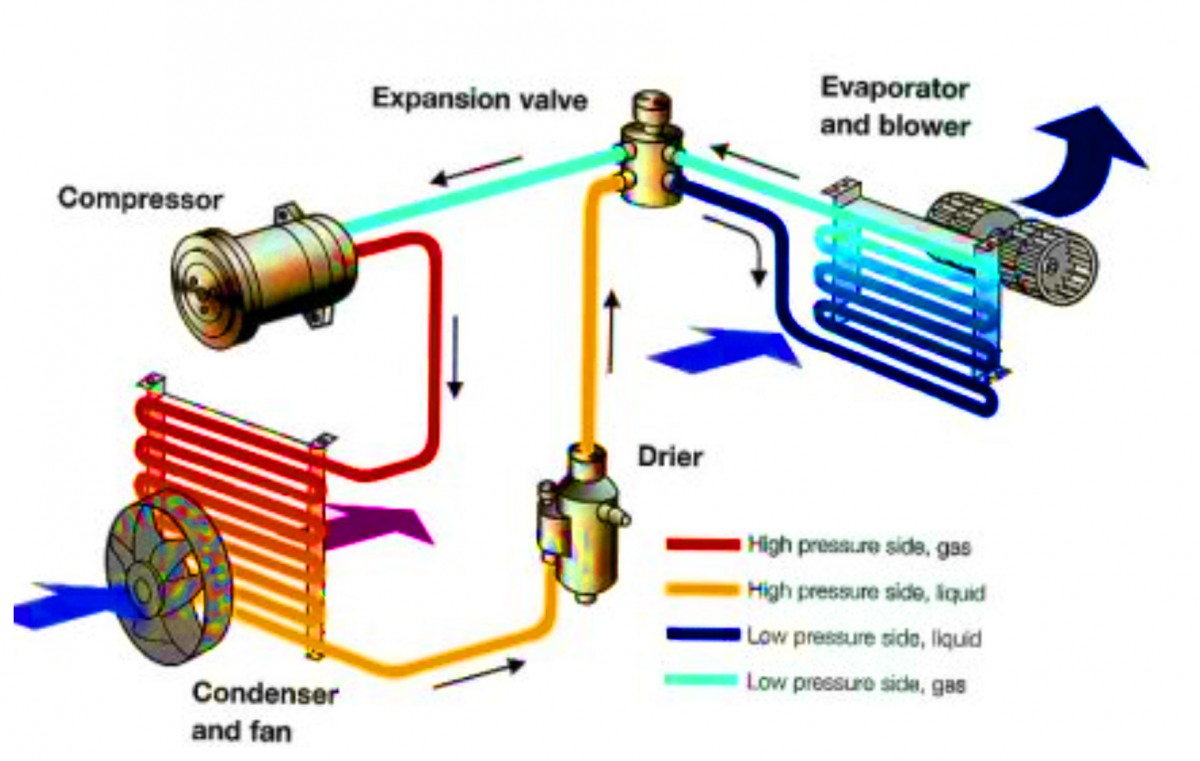A
vehicle’s engine is an assembly of numerous parts put together, accomplishing
different tasks while staying synchronized to achieve an efficient and smooth
result. Dividing those parts into three main engine elements:
·
The
Cylinder head: Contains the spark plugs, the camshafts that are responsible of
controlling the intake and exhaust valves, and have a direct relation with the
fuel injectors. It is the upper part of the engine.
·
The
Cylinder block: As the name shows, it contains the cylinders. It forms the
middle sector of the engine
·
The
Crankcase: carry the crankshaft that rotates around itself to move the piston
rods up and down. It constitutes the bottom part of the engine.
*To be noted that
the number of cylinder heads depends on the engine’s shape and how many
cylinders it has.
Figure 1: The main parts of an internal combustion
engine (Military.com, 2019)
To operate the engine, all those
components must function with great harmony and high precision. To guarantee this,
all those parts are connected with timing chains or belt. An engine with bad
timing can cause huge mechanical damages to inner parts such as valves,
pistons, roads and even the engine’s body generating major problems such as
misfire, lack of power, stalling...
Timing chain vs Timing belt:
The timing chains and belt rotates on the
camshaft and crankshaft pulleys. The timing chain is made of metal, used in the
first decades of the internal combustion engines; it is located inside the
engine and lubricated by the engine oil, lasts for a long time depending on
many aspects of the engine.
However, the timing belts are cheaper and quieter than the timing chains. They are made of reinforced rubber, first used in the 1960s, placed outside of the engine, and lasts for a shorter time than timing chains. In general, it is recommended to change the timing belt every 90000 - 120000 Kilometres or every 7 years.
However, the timing belts are cheaper and quieter than the timing chains. They are made of reinforced rubber, first used in the 1960s, placed outside of the engine, and lasts for a shorter time than timing chains. In general, it is recommended to change the timing belt every 90000 - 120000 Kilometres or every 7 years.
It is important to note that in the recent
decade, the manufacturers brought back the timing chains into their engines
with noticeable improvements in noise and vibration.
Figure 3 (Right): An internal combustion engine
with timing chains (Sellén, 2019)
Conclusion:
The timing belt is a softer version of the
timing chain that connects and makes sure that all the engine parts are working
with high precision and harmony. A timing problem in an engine may causes big
damages to its various components. Therefore, it is essential to maintain and
change your vehicle’s timing belt/chain according to your vehicle’s service
manual.
References:
- Military.com. (2019). Auto Repair: Major Engine Components. [online] Available at: https://www.military.com/off-duty/autos/auto-repair-major-engine-components.html
- Sun Auto Service. (2019). What Is The Difference Between A Timing Belt & A Timing Chain | Sun Auto Service. [online] Available at: https://www.sunautoservice.com/timing-belt-vs-timing-chain/
- Sellén, M. (2019). Timing chain vs. Timing belt: Which one is the best? - Mechanic Base. [online] Mechanic Base. Available at: https://mechanicbase.com/engine/timing-chain-vs-timing-belt-differences/









